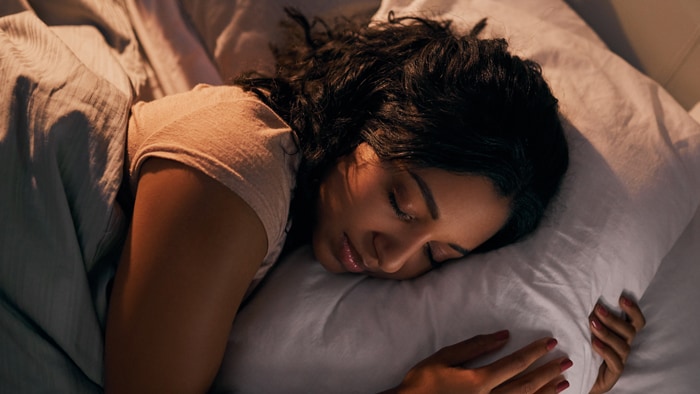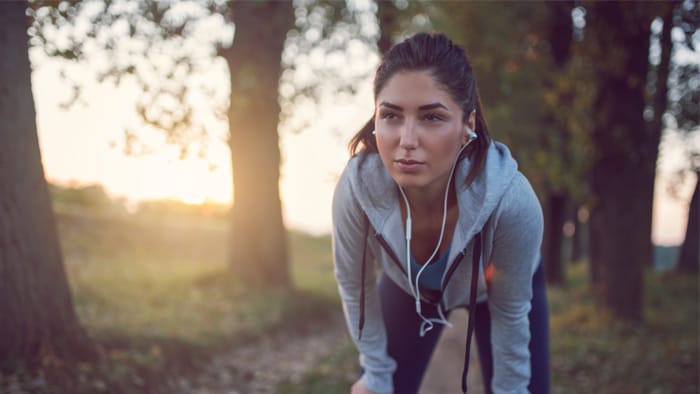The Science Behind 4 Childhood Sleep Hacks for a Good Night Sleep
Ever sleep under the stars in a backyard tent when you were a kid, pull the floor fan so close to the bed it was like sleeping in a wind tunnel, or construct a blanket fort over the bed? Those were some great night's sleep, right? There's actually scientific reasons why some of these kid sleep hacks seemed to induce a perfect night's shuteye. Let's see how they work. Sleeping under the Stars How it works: Sleeping in nature, which exposes you to more natural light and less artificial light, helps reset your circadian rhythm. In a study published in Current Biology on resetting sleep cycles, participants went camping to reset their biological clocks. Researchers then measured melatonin, the hormone that regulates sleep and wakefulness, in those who camped vs. those who stayed home. Seems levels of melatonin rise a couple of hours before we sleep to make us sleepy, and fall when we wake up. In modern life our brains think we should still be sleeping several hours after we wake up—and since we're not, it's sort of like being in a constant state of slight jet lag. But the people who camped no longer had that jet lagged feeling. Their melatonin levels shifted when exposed to more natural light. Early morning sunshine resets the internal clock helping us sleep earlier, better and wake at first light. That's why you slept like a baby under those backyard stars. Recreate it: Since you can't camp every week, try copying a natural light-dark cycle, at least on weekends. Sit by the window at dawn and expose yourself to gradual bright morning light or an alarm clock that simulates the sun rise. Then try and skip artificial light right before going to sleep. You should find yourself falling asleep earlier and waking with the dawn more refreshed. Fanning yourself to Sleep How it works: Having a fan blowing on you while you sleep not only provides white noise, a great sleep enhancer, but offers constant stimulation to the tiny hairs on your body, linked to your parasympathetic nervous system. Your nervous system has two main branches, the parasympathetic branch that slows everything down and helps you rest; and the sympathetic branch that speeds everything up. Once stimulated, those tiny body hairs go through a phase called sensory adaptation where they shut down the sympathetic nervous system to help you sleep more deeply. This is where your body stops sensing something due to constant stimulation. The same way you don't notice you're wearing clothes after a while—unless they're too tight. In his blog post “Getting Better between the Sheets," Dr. David Ryan says research shows that a fan blowing on you while sleeping offers a few benefits. Besides the tiny hair stimulation, it creates white noise and produces a constant air flow that helps keep the airway open. Again, this is likely why sleeping in the wind tunnel effect as a kid seemed to work so well. Recreate it: Try your ceiling fan on high or a typical room fan on a pedestal across the room. Experiment with speed and distance from the bed for your sleep sweet spot. Cozy Den If you were like most kids there was nothing better than creating a cozy blanket fort, and even sweeter if you got to sleep in it. Think about bears. They hibernate in small, cozy dens and caves for just this reason. One way sleeping in a fort seems so cozy may have to do with the weight of the blankets. In psychiatric care, weighted blankets are used for patients with anxiety. Blankets filled with pellets aid in sleep and relaxation. Psychology Today explains "These blankets work by providing input to the deep pressure touch receptors throughout the body," says Karen Moore, OTR/L, an occupational therapist in Franconia, N.H. Deep pressure touch helps relax the body. “Like a firm hug, weighted blankets help us feel secure, grounded, and safe," says Moore. No wonder being surrounded and covered by blankets helps you snooze. Blanket forts offered security, privacy, and a dark space that supported sleep. Likewise, tenting the bed blocks light and other stimuli and provides a psychological cue that it's time to sleep, says Karen Wang, a special needs mom blogger at Friendship Circle. Recreate it: Set up a mock bed fort. Use a canopy bed and cover it with gauzy fabric, drape material from a headboard or hang a circular fixture from the ceiling above the bed with fabric swaths that drape along the sides. Cold Feet Ever kick off your warm socks or take off footed pajamas to sleep when you were a kid? While there hasn't been research into why people prefer their feet bare, theories about sleep and temperature seem logical. Researchers know that right before you fall asleep body temperature drops and during deep sleep, the body is at its coolest--about one degree below normal. We also know that cooler temps cause sleepiness, which is why cool rooms are best for sleeping. Recreate it: One way to get to that cooler state quicker is to hang one or two feet outside the covers. Hands and feet are natural cooling receptors that help dissipate warmth so keeping them outside of the covers may help induce sleep.



